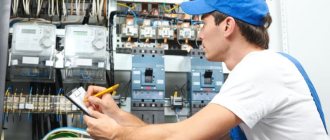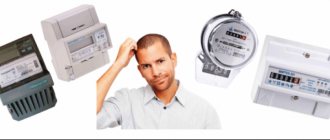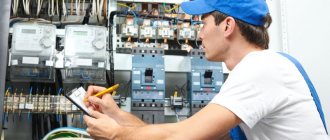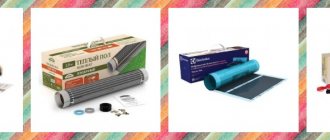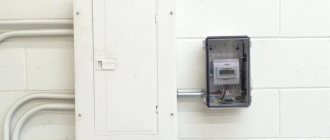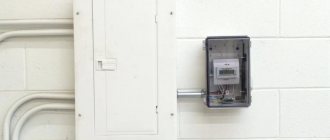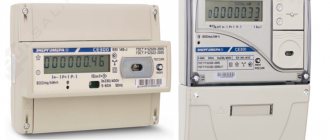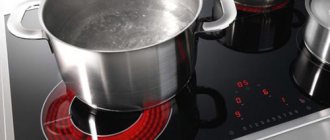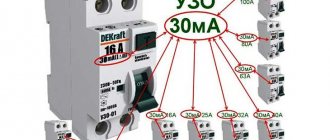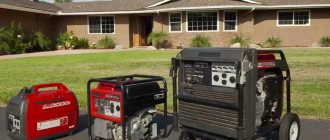- June 3, 2020
- Tools and equipment
- Yulia Tolok
In many EU countries, two-tariff meters are not uncommon. They often provide an opportunity to reduce energy costs with minimal investment. But the question of which meter is better—a single-tariff meter or a two-tariff meter—does not always have a clear answer.
It should be understood that peak loads in the system occur from 7 to 10 am from 19 to 23 pm. And to get the benefit, you need to consume electricity from 11 pm to 7 am, and it is to record these indicators that two-tariff devices are used. As a result, there are two indicators, calculated at different rates.
Not so long ago, similar devices began to be installed in our country. This differentiation of accounting helps achieve several important aspects:
- Reduce the load on the power grid during peak periods.
- Reduce the cost of energy consumption.
Moreover, if the second directly applies only to consumers, then the first is in the interests of the state. So which electricity meter is better - single-tariff or dual-tariff.
Multi-tariff devices have significant advantages. But, as it turns out, their purchase is not always justified, which is associated with the overall use of electricity, the ability to consume it in significant quantities at night, and the cost of installing the device itself.
Determining whether there is a benefit
Before you understand whether it makes sense to install a two-tariff meter, you need to answer several questions for yourself and determine:
- what is the price difference between temporary tariffs;
- how often do you have to use powerful devices;
- what is the cost of adjusting the meter clock;
- what is the difference in the cost of a single-tariff and multi-tariff metering device.
The solution to these issues begins with a trip to the organization that supplies electricity. It can clarify whether there is a division into tariffs depending on the time of day and the cost of each time interval. It also follows how these data may change in the near future.
Next you need to find out about adjusting the meter clock. What it should be like, how long it takes and how much it costs.
Multi-tariff devices have a special device built into them that prohibits the connection of a certain number of devices during peak load. It is limited in power; before purchasing, it is important to determine whether it will withstand all household appliances that you plan to turn on at the same time.
It is also necessary to evaluate which household appliances can be safely and painlessly operated during grace periods. After this, weigh the pros and cons and decide whether to install a single-tariff or double-tariff meter.
Calculation ratio - by what rules is it calculated?
First you need to find out the cost of one kilowatt of electricity per hour. And the numbers need to be determined under different conditions:
- When using a single-bet scheme.
- Daytime.
- Night time.
The calculation procedure has its own sequence:
- The difference between single rate pay and night time is determined.
- Next we need the difference between daytime and single rate type.
- The result of the first action is divided by the numbers of the second.
- We add one to the result of the third stage.
- We divide one by the result of 4 actions.
- Multiplying the number obtained from the previous operation by a hundred.
As a result, we get the calculated ratio of night-time energy consumption to daytime energy consumption, while maintaining this ratio, the payment for electricity at least does not increase if a two-tariff meter is installed.
What about the actual relationship?
This indicator will help you find out how much is actually spent on energy both at night and during the day. To do this, you need to take readings every day for one month.
This is done twice, at 7 am and 11 pm. After this, the penultimate result is subtracted from the last one. This way you can determine the average consumption for the night and day. It is better to record the data in the form of a table, then it will be more convenient.
The average daily flow rate can also be easily calculated by dividing the sum of all daily readings by the number of days in the month. The same goes for calculating the average level at night.
The actual ratio also has its own formula.
- We take the average nightly result.
- We divide it by the sum of the daytime and nighttime averages.
- We multiply the figure from the previous result by one hundred percent.
Advantages of multi-tariff devices
The main distinguishing feature of multi-tariff devices is the absence of moving parts. The consumption assessment is carried out thanks to a small number of electronic components. They provide an opportunity to assess the current state of the network. Which meter is better - single-tariff or double-tariff, can be determined by the main advantages of the latter:
- obtaining a number of indicators;
- programming capability;
- measurement accuracy;
- connection to a central control system;
- long inter-inspection period (in some devices it can be up to 10 years inclusive).
Typically, electronic electricity meters have an ergonomic design and several types of mounting so that installation can be quickly carried out in any conditions.
The optimal choice in terms of cost and accuracy are second-class devices.
Three-tariff meters
Before deciding which meter to install - single-tariff or two-tariff, you should consider purchasing a three-tariff meter. In two-tariff devices, calculations are carried out over two time periods: day and night. Three-tariff models are equipped with a more complex program. They divide the day into several zones:
- Daytime. Payment is made according to the standard rate.
- Night. Provides savings of up to 70% in terms of volume used.
- Peak. Has several periods. The first is from 7 a.m. to 10 a.m., and the second from 8 p.m. to 11 p.m. During this period, the cost of used electricity increases by 70%.
It should be understood that the cost of different tariff zones may not be the same in the regions. In addition, the division into three zones is not always supported. And in this case, the question of which meter is better—three-tariff or two-tariff—becomes irrelevant.
With such a distribution of tariffs, during peak periods it is better to use electricity to a minimum, and turn on the main equipment at night. In this case, the savings will be significant. But everyone must determine for themselves which meter is better - three-tariff or two-tariff.
The introduction of such conditions for using the device is due to the heavy load on power lines during peak hours. Therefore, there is a benefit here for both the consumer and the state. The algorithm for selecting a three-tariff meter will be the same as for a two-tariff one. First of all, find out everything about the difference in the cost of electricity. Secondly, about the cost of the device and its installation/configuration. And analyze the possibility of refusing to use most devices during peak hours.
Electricity suppliers - why do they need multi-tariff meters?
Why do companies allow the use of devices that reduce electricity bills at night? Such solutions are associated with some features that many consumers are not aware of.
- If you use a two-tariff version of the meter, then the fee will be higher during the day.
- You can’t do without changing the way you use electricity if you really want to save money. You need to spend as little as possible during the day and switch to night use. During peak hours, it is generally recommended to reduce operation to zero. This option has a lot of inconveniences. If the normal mode is maintained, the fee is reduced.
- Neighbors may be unhappy with the change in operating mode. Especially in the case of devices with noisy operation.
- Certain financial costs are also associated with such actions as purchasing and installing devices, sealing and setting tariffs. And these expenses have a high probability of not paying off. This may take years.
Parameters for choosing a two-tariff meter
Before you understand which meter is better - a single-tariff or a two-tariff, you should find out whether it is possible to pay for electricity by zone in your area. Since a multi-tariff meter is much more expensive than a regular one, its purchase must be justified.
The number of tariff levels should also be clarified; it happens that there are more than two of them. It is also possible that the gradation increases, for example, adding weekends and weekdays, or different tariffs for the seasons. This has already been implemented in several European countries, but similar experiments are periodically carried out in our country.
In addition, there are other parameters that you should pay attention to.
Conclusion
Based on our calculations, we can conclude that today in most regions of Russia a multi-tariff electricity meter is more preferable. Despite this, it is advisable to carry out an individual calculation of savings taking into account the following factors:
- An electronic meter is much more expensive than a regular single-tariff meter and will pay for itself within several years.
- Each change in the division of accounting zones and the change of clocks to summer/winter time requires reprogramming the device. On average, this service costs 400-500 rubles.
- Electricity tariffs in your locality may differ greatly from those presented in the examples. Energy supply organizations in regions with a high share of night consumption are trying to neutralize the benefits of differentiated metering.
- The more “smart” equipment you have in your home (which can be set to delayed start and safely left overnight), the greater the savings a two- and three-tariff meter can bring.
Please note that houses equipped with stationary electric stoves and electric heating systems are serviced at separate rates. If your home falls into this category, before choosing an electric meter, check with your energy sales organization at what price your debt will be calculated.
Differences between meters based on operating principle
If you understand how a two-tariff meter differs from a single-tariff meter, you should consider their operating principle. According to the principle of operation, meters are conventionally divided into two large groups - induction and electronic. Not so long ago, induction meters were installed everywhere. Their principle of operation is as follows: a current passes through the coils of the device, which creates an electromagnetic field that triggers the rotation of the disk associated with a mechanical counting device.
The operating principle of single-tariff or dual-tariff electronic electricity meters is somewhat different. The circuit contains semiconductor elements that convert the passing current into a pulse signal transmitted to the counting device.
In this case, the indication can also be provided electromechanically, but the transmission of rotation to the wheel, which counts the amount of electricity consumed, is carried out through a stepper electric drive that reacts to the pulses generated by the circuit. More modern devices provide an electronic digital display.
Multi-tariff meters, as is obvious, can only have an electronic principle of operation and are always equipped with a digital display. A programming function must be available for them, allowing you to set time intervals for electricity counting.
The LCD displays used in them require certain conditions for normal operation, such as the absence of direct sunlight or low temperatures. In the latter case, they may simply stop transmitting information, even if the meter circuit itself correctly calculates consumption. Therefore, in a private house they are installed only indoors. The latter has some disadvantages. If the data from the meter is not transferred to the system, then inspectors will have to manually go and record readings, and the consumer will have to regularly provide access to housing.
Reviews
Most users respond positively to two-tariff meters. In some cases, according to established practice, they can save up to 500 rubles or more. But there are also those who did not receive benefits after applying such a solution.
Negative reviews are usually left by those who were unable to independently calculate in advance the presence or absence of benefits. It is also important to remember that in different conditions the device has different payback. Sometimes this process drags on for several years or more.
Multi-tariff meters, which are being developed in Russia, are of interest to modern buyers. But for each device, payback along with profit must be calculated individually. Only in this case will it be easy to determine whether it is profitable to install two-tariff electricity meters.
Pros and cons of a two-tariff electricity meter, will there be savings after installation:
See also Phone numbers for consultation July 30, 2022 kasjanenko 916
Share this post
Discussion: 3 comments
- Alena F. says:
09.28.2018 at 10:37In order to benefit from installing a two-tariff meter, you must also have “unworthy” household appliances. We have an old washing machine - 19 years old, a real Siemens, it works perfectly - but it doesn’t know how to turn itself off and when it finishes washing, it works in standby mode. Therefore, for a month including it at 23-24 hours, I did not see any savings.
Answer
- Elena says:
12/04/2018 at 09:13
This is a dubious pleasure... It turns out what needs to be done at night: laundry, washing dishes, ironing, boiling water in thermoses for tomorrow, and preparing the first, second, third while cheap electricity. When to sleep and when to live? If we are talking about a washing machine and dishwasher turned on at night, you won’t save much, now appliances consume electricity extremely sparingly. And during the day you can use all this.
Answer
- Ekaterina says:
01/08/2019 at 00:43
And we have a two-tariff meter, but it has not been reprogrammed after the cancellation of the summer/winter time switch. At whose expense should this be done? The meter is located at the entrance and the readings are always taken by the chairman of the HOA.
Answer
Accuracy class
The indicator displays the possible error of the device and is expressed as a percentage. Induction meters in most cases had a class of 2.5. Whereas electronic devices usually have a higher class - 2, 1, 0.5 and higher, regardless of whether you choose a single-tariff or double-tariff electricity meter.
The accuracy class can be viewed both on the device itself and in the technical documentation. Usually it takes the form of a pictogram in the form of a number enclosed in a circle.
Obviously, the higher the accuracy class, the more expensive the device. And here it is necessary to understand one more important subtlety. Often, electrical network workers require the purchase of a device with high accuracy, for example, 1 or even 0.5. This is not justified; there is government decree No. 442 of May 4, 2012, which determines that accuracy class 2 or higher is established for private consumers in apartment buildings or private buildings. Class 1 is only required if the system load is above 670 kW, which is practically impossible under such conditions.
The same decree states that if there is an installed measuring device with a lower accuracy class, then it must be replaced only after the test interval has expired or it has failed. Thus, workers' demands to replace the meter with a more accurate one are illegal.
A short overview of popular models of electric meters for apartments
Single tariff devices
Induction meter SO-EU-10 10-40A
A model that has stood the test of time and is still in mass production, despite the development of new technologies. Classic circuit of a conventional induction meter. Produced by several domestic companies.
Meter SO-EU-10 is a model that has long proven its reliability and durability
The device records consumption in a single-phase network, naturally, only with a single-tariff plan. It has a sufficient accuracy class - “2”.
Rated current – from 10 to 40 A. Housing protection class – IP51. Operating temperature range – from – 20 to + 55 degrees.
Designed for conventional installation in a panel using three screws. The weight of the device is no more than 1.2 kg.
The manufacturer provides a 24-month warranty on the device. The established service life is 32 years. The intercheck interval is 16 years.
Such characteristics, along with the low price, are often quite sufficient for installing the device in an apartment.
TsE2726 - SOLO (5-60A)
The layout is very similar to the previous model, but this is an electronic pulse device with an electromechanical indication of readings.
Also a very reliable model, well suited for installation in old-style switchboards
The meter is single tariff, with accuracy class “1”. Permissible current – up to 60 A.
Extended operating temperature range – from – 40 to + 60 degrees. Housing protection class – IP52. Standard sizes for installation in a panel with screw fastenings. The weight of the device is no more than 1.3 kg.
The manufacturer provides a warranty of 36 months. The established service life is at least 30 years, with an inspection interval of 16 years.
Neva 103 1SO
Single-tariff electronic device with electromechanical seven-digit reading indicators. A very compact, easy-to-use model that has gained wide popularity among consumers.
Neva 103 1SO – fits perfectly into a standard cabinet with DIN rail
The accuracy class of the device is “1”, the maximum current is up to 60 A. It is allowed to be installed outdoors or in unheated rooms. Good degree of housing protection - IP52
The device is designed for installation in a cabinet on a DIN rail. Professionals note the reliability of the latch, which simplifies installation work and the convenient location of terminal connections.
The warranty period of the meter is 24 months, the service life is up to 30 years, the inspection interval is 16 years.
Among the shortcomings, some users point out quite audible clicks when the device is operating.
Mercury 201.8
Also a single-tariff meter, but with a liquid crystal display. Characterized by excellent performance indicators.
Single-phase single-tariff electronic meter with LCD display Mercury 201.8
Accuracy class – “1”. The permissible maximum current is 80 A.
It is characterized by increased resistance to adverse operating conditions - temperature range from - 45 to + 70 degrees, humidity - up to 90%. Taking readings is facilitated by the presence of a special LED display backlight, which can be turned on if necessary.
Compact housing, convenient screw terminals for connecting wiring. The device is designed for installation on a DIN rail.
Service life is estimated at 30 years or more. The intercheck interval is 16 years.
The only disadvantage we can note is the lack of ability to connect to a telemetric energy consumption metering system.
Multi-tariff meters
Line of ESR meters - 55
It’s not in vain that it’s said about the line, since it includes several models (8 in total), similar in their performance characteristics, but differing in layout and installation method. All this is the product of the well-known company MZEP (Moscow Electrical Instruments Plant).
SOE-55 50T in the “classic” old layout
SOE-55 devices of 50T models have the ability to keep records at four tariffs. The maximum current for them is set to 50 A, but 60Sh-T devices have expanded capabilities. This also applies to the maximum current - up to 60 A, and the number of separate readings - up to eight.
Meter SOE-55 60Sh-T in a housing for installation on a DIN rail
All devices in the line have accuracy class “1” and are equipped with an LCD display. Differences may be in the housing design. Thus, housings No. 1 and No. 4 are for installation on panels with screw fastening. Cases No. 3 and No. 2 – for installation in cabinets on a DIN rail. The weight of the devices is small - depending on the design of the case - from 0.6 to 0.8 kg.
The warranty for soya devices is 3.5 years. The service life of the meters is 321 years with an inspection interval of 16 years.
Energy meter CE102M S7 145-JV
A modern metering device with additional functions. It has proven itself well in networks with multi-tariff consumption payments.
Modern meter with the possibility of differentiated consumption metering Energy meter CE102M S7 145-JV
The model is characterized by increased versatility and is capable of working in the most unfavorable conditions. Operating temperature: from – 45 to + 70 degrees. The permissible level of air humidity is up to 98%.
The device is capable of maintaining separate accounting at eight tariffs with a host of other interesting features that are available with individual programming. In addition, it is equipped with non-volatile memory that stores monthly and daily consumption levels, balances according to the limit (if it is set). Readings can be taken even when the network is completely de-energized. LED backlighting is provided for easy data reading. The meter is initially equipped with a feedback interface for connecting to an automatic data accounting system. There is a built-in protective voltage relay.
The warranty period of the device is 5 years. The established service life is at least 32 years, with an inspection interval of 16 years.
Installation – screw on the shield.
Mercury 200
A very popular line that allows you to keep separate records of energy consumption at four tariffs. There are three models on sale (02, 04 and 05), identical in all their main characteristics and differing only in the type of feedback interface. That is, any of them can work in an automatic consumption metering system.
Multi-tariff electronic meter Mercury 200.02
The accuracy class of the device is “1”. The permissible maximum current is up to 60 A. Built-in protection system.
Operating temperature: from – 40 to + 55 degrees.
There is a non-volatile memory with recording of readings for the last 11 months. The possibility of individual programming of the device is provided, taking into account possible “subtleties” of tariff plans.
The service life is estimated at 30 years, with a manufacturer's warranty for the first three years. The intercheck interval is 16 years.
The meter is designed for installation in a cabinet on a DIN rail. The weight of the device is only 600 grams.
One of the disadvantages is the lack of display backlight, which in certain conditions makes it somewhat difficult to take readings.
* * * * * * *
So, the main issues related to choosing the optimal electricity meter for an apartment were considered. We hope the information received will be useful in purchasing the most suitable model.
The information in the article will be supplemented by a video about the electronic multi-tariff meter “Neva”
Single-phase, three-phase, maximum current
The question of which meter to install—one-tariff or two-tariff—may not be the only one. Most city apartments or private houses are connected to a single-phase 220 V network with a frequency of 50 Hz. These are the indicators that the counter should meet. However, there are also connections to a three-phase network. This usually becomes necessary in apartments or private houses with electric heating or stationary electric stoves. In this case, special sockets and plugs are installed in the house, on more powerful cables.
If you have a three-phase connection, you will have to purchase a corresponding meter. Some three-phase meters can be connected to a single-phase network, which greatly expands their versatility.
In addition, for each meter, parameters such as rated and maximum load current are determined. As a rule, they are designed for a maximum permissible value of 60 A, which corresponds to 10 kW. This is quite enough for most cases. However, if the total load can exceed 10 kW, then you should purchase a meter with a maximum current value of 100 A. Typically, such devices are connected directly to the network without the use of additional converters.
All these indicators are indicated on the front panel of the device or in its technical data sheet.
Communication Interfaces
As power grids develop, new requirements are introduced for consumption metering systems - automation and connection interfaces. The latter are necessary for transmitting meter readings to local stations and to a unified center, including other types of devices for counting consumed services. For this they use power lines or GSM networks.
The purchase of such an electricity meter, single-tariff or dual-tariff, will be considered expedient only if such automation is introduced in the near future in a local energy-saving organization. In addition, if such an innovation is planned, then you should consider purchasing such a counting device in advance so that you do not have to change it later.
Additional options
In addition to separate tariffs, modern electronic meters can have a number of other additional options. They are the difference between a single-tariff meter and a two-tariff meter. These include:
- entering monthly indicators into memory cells;
- transferring data to a computer;
- taking instant readings – current consumption, voltage, active power at a moment in time.
- Logging of peak consumption points, voltage surges, phase measurements and much more.
But, as practice shows, most of these functions remain unclaimed for household consumers.
Differences by installation type
When choosing a meter, it is necessary to take into account not only which meter is better - a three-tariff or two-tariff one, but also its design features, and, first of all, the method of installation in the distribution board. Old devices were installed using old screw fastenings at three points, for which mounting holes were provided on the devices themselves, and threaded sockets on the panels.
A more modern option for mounting a switchboard with a device is installation on a DIN rail. In this case, there is a shaped groove on the meter with a lock that helps to secure it to a standard profile rail.
Some models may provide the ability to use both types of fastening. Moreover, the same device circuit can be housed in different housings.
When building a private house or during a major renovation of an apartment, many people prefer modern plastic boxes of an external or built-in type with the meter and other elements mounted on DIN rails. But which meter is better - a single-tariff meter or a two-tariff meter, everyone decides for himself.
How to choose two-tariff meters?
The principle of choosing two-tariff meters
Here you can use the same principles as in the case of conventional devices. The number of phases of the electrical network in the house is the main indicator, which it is recommended to find out about in advance.
Conventional residential buildings involve the use of only one phase. This is easy to find out by looking at the voltage rating. Its standard value is 200 Volts.
Three-phase two-tariff meters will be needed by customers in the following situations:
- For the garage.
- For a small enterprise.
- When a three-phase power supply line is connected to the house itself.
What to look for when purchasing
First of all, it is worth paying attention to the fact that such devices should not be purchased from organizations that do not have the appropriate state certification or from random individuals. It is also necessary to abandon the idea of purchasing a used device. It, of course, costs less, but there may be problems with verification and installation.
A reasonable approach is to contact your local energy sales organization. They may offer to purchase a meter from them or tell you which models are most recommended for installation.
Disadvantages of two tariff meters
After installing the meter, you need to carefully study your daily routine. To be more precise, all manipulations associated with electrical devices must be transferred to the night, otherwise the device will simply be useless. This means that you need to load the washing machine, turn on the heating devices or charge them only after turning on the low tariff.
Before installing a dual-mode meter, you should know the tariff rates applicable in your area, as they can vary significantly even in neighboring areas. If the discount is only 10-20%, the device can be called unprofitable; it will pay for itself in at least 5 years. If you are satisfied with these conditions, you can proceed to purchase and install the meter.
On a note!
When thinking about lowering your energy bills, it's easier to save money than changing your tariff plan. It is widely believed that a two-zone tariff only pays for itself when most of the energy is used during off-peak periods. But most users - both companies and households - use energy when it is more expensive.
